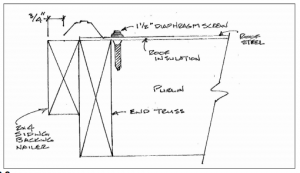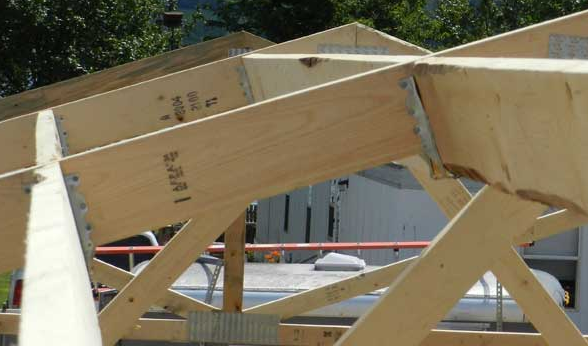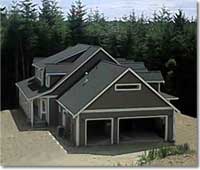This is one of those “Dear Pole Barn Guru” letters which I feel bad for the client in having to answer. The client has paid good money to have his new post frame building constructed, only to have installer challenges render the end result as far less than ideal.
For your reading pleasure:
DEAR POLE BARN GURU: The Hansen pole barn kit I bought has 26 gauge steel roofing put on twice by a licensed contractor that still leaks profusely. A licensed roofer suggested 50 year shingles. Will the trusses bear the weight of a wooden deck and shingles? What’s the expected life span/warranty on your 26 gauge steel roofing from ABC in SLC? TOM in SHERIDAN
DEAR TOM: I’ve had seen the photos of your roof from the inside, as near as I can tell, the roof purlins were not originally set in a straight line from one end of the building, to the other. It then appears the roof steel was predrilled, causing a plethora of screws to miss the purlins as installation progressed from the end towards the middle. The only real solutions are to add lots of framing under all of the holes (so every screw goes straight into the underlying framing) or to remove the roofing, align the purlins and then install new steel over them. If the roof plane is square, the purlins are placed in straight rows and the roof steel is predrilled to properly match the purlin spacing, there is no reason it should leak – other than plain installer error. Placing screws through holes at an angle, or using caulking is not an adequate repair.
As with most post frame (pole) buildings, the roof has been designed to support the weight of the trusses, roof purlins, minimal roof insulation (to prevent condensation) and the roof steel. In order to support OSB or plywood and shingles, at a minimum the roof would need to have been designed for a 7 psf (pounds per square foot) dead load, rather than 3.3 psf. It might be possible to get an engineered repair to the trusses to increase the load carrying capacity, but it is unlikely it would be an easy, or inexpensive, fix.
The steel warranty information is available on our website at:
https://www.hansenpolebuildings.com/pole-building-faqs/product-warranties/
In your climate, properly installed, your steel roof should last longer than either you or I.
On a side note – a “50 year” shingle typically has a very rapid decline in what percentage of replacement material (no labor) is covered. Here is the true story of shingle warranties:
https://www.hansenpolebuildings.com/2015/03/shingle-warranties/


 We recently had a client send us the photos seen with this article. Their four year old building had developed a series of rust through holes and the client wanted to know if the steel panels were still under warranty.
We recently had a client send us the photos seen with this article. Their four year old building had developed a series of rust through holes and the client wanted to know if the steel panels were still under warranty.





